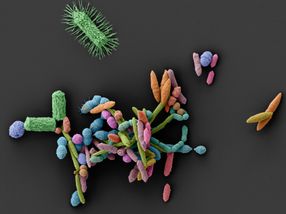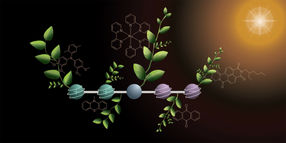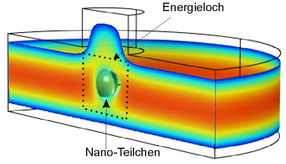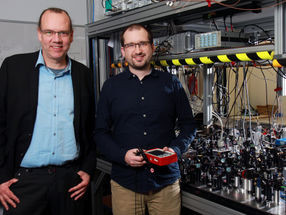Molecular 'firing squad' in mice triggered by overeating destroys metabolism
Advertisement
Overeating in mice triggers a molecule once considered to be only involved in detecting and fighting viruses to also destroy normal metabolism, leading to insulin resistance and setting the stage for diabetes. The new study, led by researchers at the Harvard School of Public Health (HSPH), specifically links together the immune system and metabolism, a pairing increasingly suspected in diseases that include — in addition to diabetes — heart disease, fatty liver, cancer, and stroke. Understanding how to regulate the molecule through targeted drugs or nutrients could eventually change the way these diseases are prevented and treated in humans. T
"When mice eat a normal diet, this molecule called PKR is silent," said senior author Gökhan Hotamisligil, chair of the HSPH Department of Genetics and Complex Diseases. "However, if a cell containing PKR is bombarded with too many nutrients, PKR grabs other immune system molecules that respond to this food attack and organizes a firing squad to shoot down normal processes, leading to insulin resistance and metabolic dysfunction."
The results provide compelling evidence that a process called "metaflammation" occurs in the body, said Hotamisligil. Metaflammation is inflammation triggered by the metabolism of nutrients that occurs when the body processes food into energy. Previous studies by Hotamisligil had demonstrated inflammation in metabolic diseases such as obesity, type 2 diabetes, and heart disease in mice and humans.
"We know that nutrients can be detrimental in excess quantities or when they are in the wrong place at the wrong time," Hotamisligil said. "But we don't quite understand which paths they travel that result in harm and produce inflammation. PKR is a mechanism by which nutrients — necessary and beneficial under normal conditions — cause damage to cells and organs."
The researchers used sets of mice in their experiments. One set had PKR in its bodies, and the other set did not. The scientists then overfed a group of PKR-positive and PKR-negative mice high-fat, high-calorie diets. The overfed mice with PKR became obese and developed insulin resistance, while the overfed mice without PKR gained significantly less weight and did not develop insulin resistance, indicating that absence of PKR can alleviate harmful metabolic effects due to overeating in mice.
Now the researchers will turn their attention to identifying which nutrients cause the adverse effects. "One of the difficulties in understanding how our diet is integrated into disease risk is our inability to understand what specific component of a diet is actually regulating particular responses in humans," said Hotamisligil. "So the discovery of this molecule actually gives us a very specific way to identify the harmful components of the diet."
Results from those studies could be available within a couple of years, Hotamisligil predicted, after which human trials would be needed on potential drugs or nutrients that could regulate PKR.
Original publication: Takahisa Nakamura, Masato Furuhashi, Ping Li, Haiming Cao, Gurol Tuncman, Nahum Sonenberg, Cem Gorgun, and Gökhan Hotamisligil; "Double-stranded RNA-dependent Protein Kinase Links Pathogen Sensing with Stress and Metabolic Homeostasis"; Cell 2010.































































